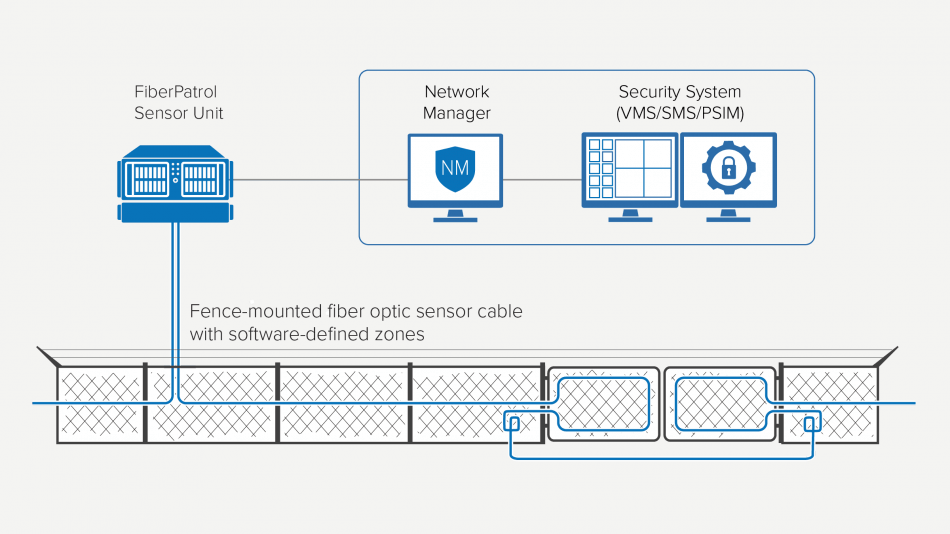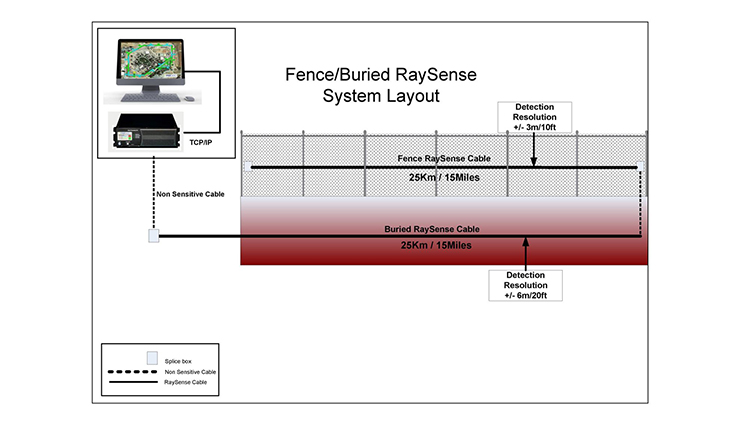The Role of Fiber Security in Boosting Your Cyber and On-Site Security Network
The Role of Fiber Security in Boosting Your Cyber and On-Site Security Network
Blog Article
Secure Your Building With Reliable Fiber Optic Protection Solutions
In an age where protection threats are progressively innovative, the need for reliable protection options is extremely important. Fiber optic safety systems stand apart by using remarkable integrity and performance, leveraging innovative light transmission innovation to enhance monitoring capacities. These systems not only provide resistance to electromagnetic disturbance but likewise assure long-lasting price performance via decreased maintenance needs. The choice to spend in such a remedy involves careful factor to consider of different elements. Comprehending the ins and outs of fiber optic protection can illuminate the course to protecting your property better. What elements should be checked out to maximize your financial investment?
Benefits of Fiber Optic Safety
Fiber optic safety services provide a series of advantages that make them increasingly essential in today's electronic landscape. One of the most considerable benefits is their premium data transfer capacity, which enables the transmission of big quantities of information over long ranges without considerable signal degradation. This capacity is especially helpful for safety and security systems that count on high-def video monitoring and real-time monitoring.
Additionally, fiber optic cords are inherently much more secure than standard copper circuitry. They are unsusceptible to electromagnetic disturbance, making them less prone to hacking or eavesdropping. This enhanced safety is critical for shielding sensitive information and keeping the stability of security systems.
Furthermore, optical fiber are much more sturdy and resistant to environmental variables, such as wetness and temperature variations, ensuring long-lasting integrity and minimized maintenance costs. The lightweight nature of fiber optic cords additionally simplifies installation procedures, enabling greater flexibility in system style.
Just How Fiber Optic Equipment Work
In modern security applications, the procedure of fiber optic systems relies upon the concepts of light transmission via flexible glass or plastic fibers. These fibers are made to lug light signals over fars away with marginal loss, making them optimal for sending information connected to safety and security tracking. The core of the fiber, surrounded by a cladding product, guarantees that light signals stay had within the core through a phenomenon called complete inner reflection.
When incorporated into safety systems, fiber optic cables can send data from numerous sensing units, such as cameras, movement detectors, and alarm systems, to a central surveillance terminal. The high bandwidth capacity of optical fiber enables for the transmission of huge amounts of information all at once, allowing real-time surveillance and timely response to potential hazards.

Kinds Of Fiber Optic Safety And Security Solutions
Different sorts of fiber optic protection services have actually arised to improve surveillance and protection throughout different atmospheres. One prominent option is fiber optic perimeter invasion detection systems (PIDS), made to keep track of and safeguard residential property boundaries with the discovery of resonances and disturbances along fiber optic wires. These systems offer real-time signals, enabling timely feedbacks to unapproved access attempts.
An additional effective service is fiber optic video clip security. This innovation leverages high-def cameras linked using fiber optic cables to transfer video clip information over fars away without significant loss of high quality. This arrangement is specifically beneficial in large locations, such as airports and industrial sites, where conventional copper cords might falter.
Additionally, fiber optic sensors are progressively used for ecological surveillance, detecting changes in temperature level, stress, or acoustic signals that can show protection violations or unsafe problems. These sensors provide high sensitivity and accuracy, making them optimal for important framework protection.

Setup and Upkeep Tips
Reliable setup and maintenance of fiber optic safety remedies are vital for ensuring their optimum performance and longevity. Fiber optic wires ought to be directed safely, avoiding sharp bends or spins that could endanger their integrity.
Throughout setup, it is a good idea to conduct detailed testing of the system to validate that all elements are operating properly. Regular maintenance checks must be scheduled to check the fiber optic cables for any type of signs of wear or damage, as well as to ensure that links remain safe. Cleansing the connectors occasionally is also essential to prevent signal loss because of dirt or debris.
Moreover, maintaining an updated stock of set up components and their specs can promote simpler troubleshooting and upgrades. By sticking to these installment and maintenance suggestions, Bonuses building proprietors can optimize the performance of their fiber optic security options, making certain a reliable defense against possible risks.
Contrasting Prices and Performance
When evaluating fiber optic security services, comprehending the equilibrium between expenses and efficiency comes to be extremely important (security fibers). Organizations has to consider the upfront investment, recurring upkeep expenditures, and the lasting worth these systems give. While fiber optic systems might call for a greater initial installation price contrasted to typical copper circuitry, their durability and lowered sensitivity to electromagnetic disturbance usually convert to lower maintenance costs over time
Performance is another important aspect; fiber optic safety systems provide enhanced information transmission rates and enhanced integrity. They can cover bigger ranges without signal deterioration, making them optimal for expansive residential or commercial properties or remote locations. In addition, the high data transfer ability supports advanced protection applications, such as high-def video security and real-time tracking, which are important for comprehensive security monitoring.
Inevitably, the option in between index expense and efficiency should be assisted by specific safety needs and run the risk of assessments. Organizations should examine their distinct needs, thinking about variables like home dimension, safety and security dangers, and technical improvements. By conducting an extensive cost-benefit evaluation, stakeholders can make informed decisions that line up with their protection objectives while making sure a sound financial investment in fiber optic modern technology.
Conclusion
In final thought, fiber optic safety remedies offer considerable advantages in terms of efficiency, integrity, and immunity to environmental interferences. Inevitably, the adoption of fiber optic modern technology represents a forward-thinking approach to guarding residential properties against evolving safety and security risks.
Report this page